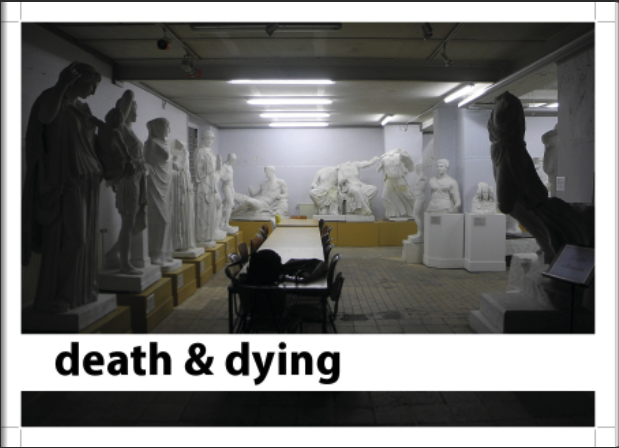
Death and Dying
‘Death and Dying’ student booklet
Time marks everything. We usually try to avoid thinking too much about personal decay. Nevertheless, it is a challenge addressed in various ways by science, religion, literature, and art. The images and texts in this booklet are from a workshop held at the University of Hamburg in the winter of 2016/17. The idea behind encouraging an interaction between different ways of thinking is inspired by the work of Ernst Cassirer (1874-1945). He distinguishes between mythic space, aesthetic space and theoretical space, so that each has its own legitimacy. Systematic reflection can be a means of consolidating such diverse learning experiences.
The short quotations in this booklet were written by participants, in essays intended to foster such forms of distancing. Thinking about human transience might be unpleasant but, at least according to Buddhists and many other wise people, to do so can be very good for our mental well-being. As one of the major philosophical questions, it certainly has its place in the university. The exhibition was held in the Gipsabgusssamlung, a strange and forgotten place. Copies of classical Greek and Roman sculptures, made in the second half of the nineteenth century, are housed in what used to be the basement of a bakery. Gordon Mitchell Ernst Cassirer. 1969. “Mythic, Aesthetic and Theoretical Space”, Man and World, Vol. 2(1)., 3-17. (“Mythischer, ästethischer und theoretischer Raum”, Kongress für Ästhetik und Allgemeine Kunstwissenschaft, Hamburg, 1930.)
